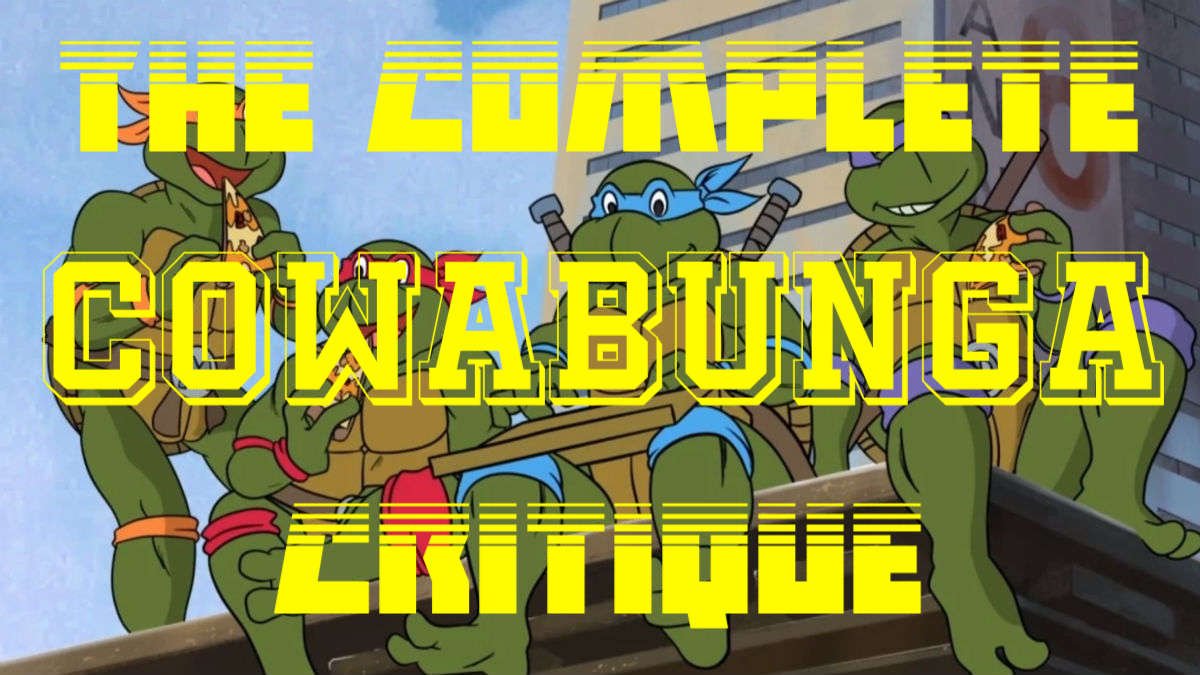Intro to Criteria
The Teenage Mutant Ninja Turtles are one of the most brilliantly designed pop culture phenomenons ever produced. You can’t really argue otherwise without making yourself look terribly foolish. Even if you don’t care for everyone’s favorite amphibious martial artists, there’s no denying their Brobdingnagian appeal, and their resulting impact on popular culture. New series, movies, and video games continue to be produced. The Turtles have been rebooted no less than four times, with varying degrees of success. But the franchise has never rested for long, with yet another new animated series about to drop even as I type. Whatever the indefinable ephemeral “it” is, the Turtles have “it” by the bucketful.
I’ll admit right now that The Complete Cowabunga Critique cannot even pretend to be impartial. The original Ninja Turtles cartoon was a big part of my childhood, and the source of many great memories. It may be hard for younger generations to fathom but when I was eight years old, the Ninja Turtles weren’t just the most popular show or the hottest toy in the world. They were the biggest thing in the world. Period.
For example… on the last day of fourth grade, our teachers threw the kids a pizza party and wheeled in a TV with a VCR to keep us occupied until the final bell of the year. My teacher popped in the VHS tape that came with the pizza—a collection of Ninja Turtles episodes. As soon as the theme song began to play, every kid in the room was singing along at the top of our lungs. I remember the look of shock on my poor teacher’s face. She had been trying and failing to get this class of fourth graders to sing the national anthem in harmony for months, and now here we were belting out the Ninja Turtles theme with perfect synchronicity, completely unsupervised by any adult. There were forty kids in that room, and all of them knew every single word of that song. I wonder if there’s anything that could provoke a similar response in the classrooms of today. Pokemon, perhaps.
But indulging my old memories is not the point of this post. As I prepare to perform an exhaustive critique of the entirety of Teenage Mutant Ninja Turtles, I wanted to lay down the ground rules and establish the criteria for review. All of the animated series will be judged on the following elements:
Theme Song: Obviously a huge part of the original series’ success. You might be surprised that anyone has ever attempted to replace it, but they have.
Art Style: How does the show look? What inspirations and influences are present? How smooth is the animation?
The Turtles: The titular band of brothers, the cornerstone of this whole thing. How do the characters work separately and together? How do Leonardo, Donatello, Raphael and Michelangelo relate to each other not just as partners, but family?
Friends: The Turtles are often aided on their quests by a myriad of interesting allies— from Channel 6’s top news reporter to everyone’s favorite samurai rabbit. How many friends new and old do we meet, and how well are they represented?
Foes: Every series would be more boring without a stable of villains to reliably threaten our heroes. Of course Shredder has been the most memorable, but the Turtles have amassed an extensive rogues’ gallery over the decades. In fact, it is fairly common for new characters created for the show to eventually be integrated into the comics. Who gives the Turtles the most trouble, and looks the coolest while doing it?
Notable Stories: The Turtles’ origin story gets retold the most, but it’s not even close to one of their best stories. They have fought ninjas, robots, and aliens. Traveled all over the world and through space and time, as well. The Ninja Turtles are remarkably versatile protagonists, so what are the best and most memorable stories of each series?
Catch Phrases: From “Cowabunga!” to “Hot Soup!”, no Ninja Turtles series is complete without one.
Lasting Impacts: What new and interesting things does the series add to the lore? How did each show change the Turtles and their world?
Those are the criteria I’ll be using to critique the various animated series. I’ll conclude with an overview of each one and how watchable it is today. And of course, how it compares to my warm and fuzzy memories. Just a reminder, my first critique will be of the 2003 series, since I’ve never seen it before. I’m looking forward to it.


